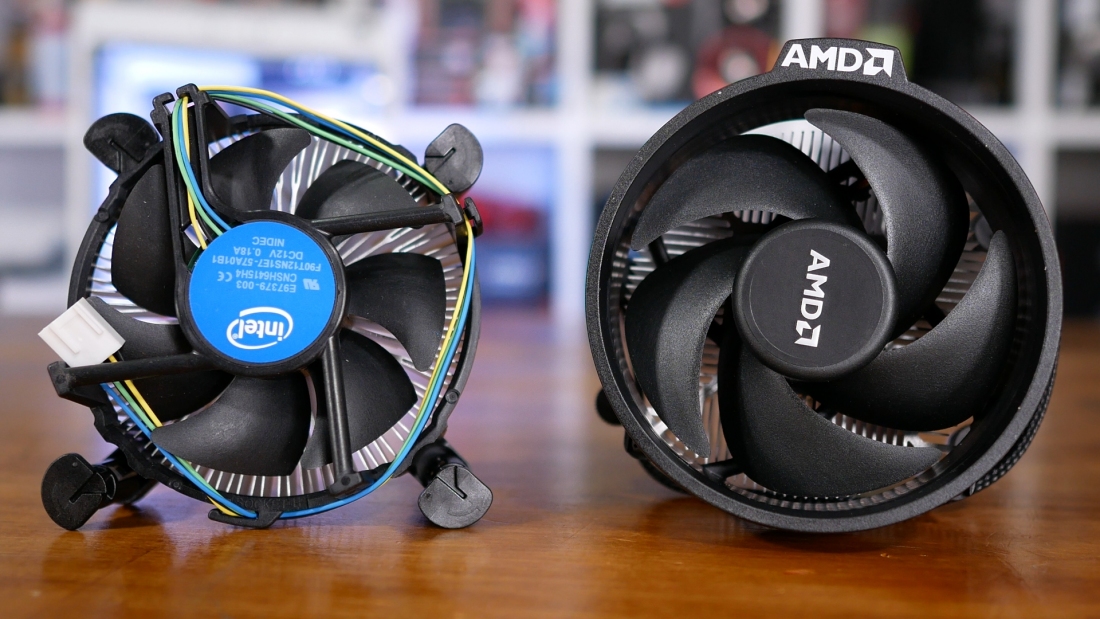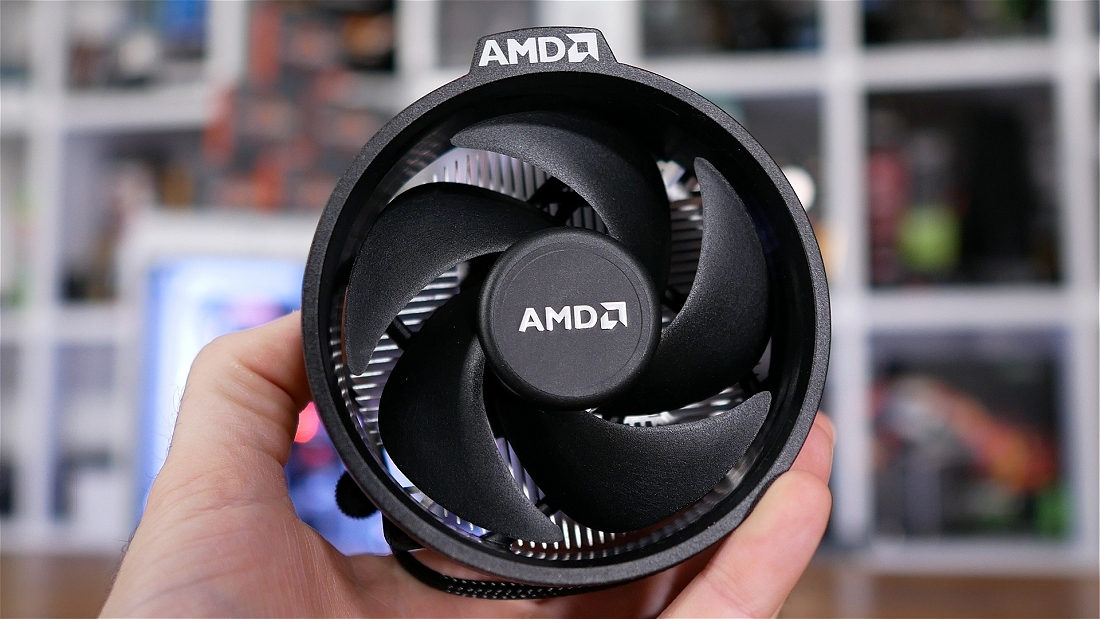Temperatures & Final Thoughts
Using AMD's stock coolers, the standard 1500X idled at 35 degrees and peaked at 68 degrees using the Wraith Spire. When overclocked to 3.95GHz, however, its temperatures increased to 42 degrees at idle and 88 degrees under load. That said, the heatsink wasn't uncomfortable to touch and while audible it wasn't screaming loud.
I should note that all Ryzen 5 overclocking was done using the Wraith Spire for the 1500X and the Wraith Max for the 1600X, but I will talk more about CPU coolers more toward the end of the article. It's also worth keeping in mind that I'm using a power bug program to over-stress the CPU, so when gaming your temps shouldn't get this high.
When paired with the Wraith Max, the 1600X idled at 36 degrees and maxed out at just 61 degrees at the stock frequencies. That said, it reached a toasty 90 degrees when overclocked.
Keep in mind while the 1600 does come with the Wraith Spire the 1600X that we are testing here, doesn't come with a cooler at all. For this reason I strongly suggest buying the cheaper 1600 over the 1600X. Of course if you are going to seriously overclock either 6-core model you are probably better off investing in a large tower style cooler or an AIO liquid cooler, these are of course mandatory items for the Core i5-7600K.
A fantastic alternative to Intel's Core i5-7600K
Priced at $250, the six-core 1600X is an exceptional buy and a fantastic alternative to Intel's Core i5-7600K, which offers only four cores for the same price. Granted, they're exceptionally good cores that can be pushed quite far and may even look to be the better choice right now in most games.
That said, the 1600X offered more consistent performance in Battlefield 1 and of course still pushed well over 120fps. It also made out better in Ashes of the Singularity: Escalation and provided similar performance in Hitman. Even in games such as Mafia III and Deus Ex: Mankind Divided where the 1600X trailed the 7600K, the margins weren't that great.
So, out of the box gaming performance is currently similar between AMD and Intel, but Ryzen holds a clear lead in productivity performance regardless of the application (hundreds will mimic what was seen in 7-Zip and Excel). The 1600X is a beast for content creation at this price point, roughly matching the 7700K for $100 less.
Even when overclocked, the 7600K can't hang with the 1600X when it comes to productivity and we expect this to be the case with games once they start better utilizing Ryzen.
Ryzen 5 feels more like an enthusiast-grade product than Intel's thanks to its quality heatsink and unlocked multiplier as well as overclocking support on not just the flagship chipset but also the affordable B350.
On the contrary, the 7600K requires a pricier Z-series chipset if you plan to overclock and don't forget there's no stock cooler at all. That's right, you pay more for the unlocked K-models and Intel does you a favor by keeping the metal, so you can immediately add $20-$30 to the total expense for a basic air-cooler plus the aforementioned ~$20 premium on motherboard.
After accounting for the cooler and comparing the price of these processors with an entry-level motherboard that supports overclocking, we find that the 1600X actually ends up costing 8% less, not the 4% more it seems for just the CPU. If you opt for the vanilla 1600 like I suggest, then you're saving over 15% on the core components. That's pretty insane for a 12-thread setup versus a quad-core.
If you thought the 1600X seemed liked a pretty obvious choice, then sit down, the 1500X is a no brainer. Quad-cores are somewhat unexciting in 2017 but the SMT-enabled, four-core, eight-thread 1500X does rather well for itself and represents an exceptional value at $190.
For around the same money, your alternatives are the Core i5-7400 and 7500, which were handily dispatched by the 1500X throughout our testing. They were evenly matched in gaming for the most part, though the 1500X can be overclocked at no extra cost while it's impossible to squeeze any more performance out of the locked Intel chip.
As with other Ryzen processors, the 1500X was in a different league when it came to productivity workloads. As I said when discussing the 1600X, the 1500X is a chip that enthusiasts will appreciate as it can be overclocked and take advantage of faster memory.
It should be noted that we benchmarked using a Titan X Pascal and gaming performance between the CPUs will level out further with a less extreme graphics card, something like the RX 480/GTX 1060 or even GTX 1070. However, with their additional resources, the Ryzen chips will shine in CPU-bound games regardless.
Overall I think I'm more impressed with Ryzen 5 series than I was with Ryzen 7 for the simple fact that there is less competition at these price points. Intel has done a poor job of looking after enthusiasts, particularly those on a budget and this is where these new Ryzen 5 chips really hit hard.
This makes me think how incredible the Ryzen 3 range is going to be in terms of value. You might scoff at a $130-$150 quad-core that lacks SMT support, but remember how rich the upgrade path is. The AM4 motherboard that you buy today should still be able to support new AMD processors all the way to 2020, so the option to move on from an affordable quad-core in a few years to something much more capable will be possible and this is another reason why I'm so keen on the 1500X.
Shopping shortcuts:
- AMD Ryzen 5 1600X on Amazon
- AMD Ryzen 5 1500X on Amazon
- AMD Ryzen 5 1600X on Newegg
- AMD Ryzen 5 1500X on Newegg
That concludes our release day coverage of Ryzen 5, but we'll be back soon enough with results for the 1600 and 1400, which should deliver an even greater value than we've seen from Ryzen so far!
Pros: Exceptional value compared to their Intel Core i5 counterparts. Ryzen holds a clear lead in productivity performance, though gaming performance is more evenly matched between Intel and AMD.
Cons: Power efficiency goes right out the window once you start overclocking.






